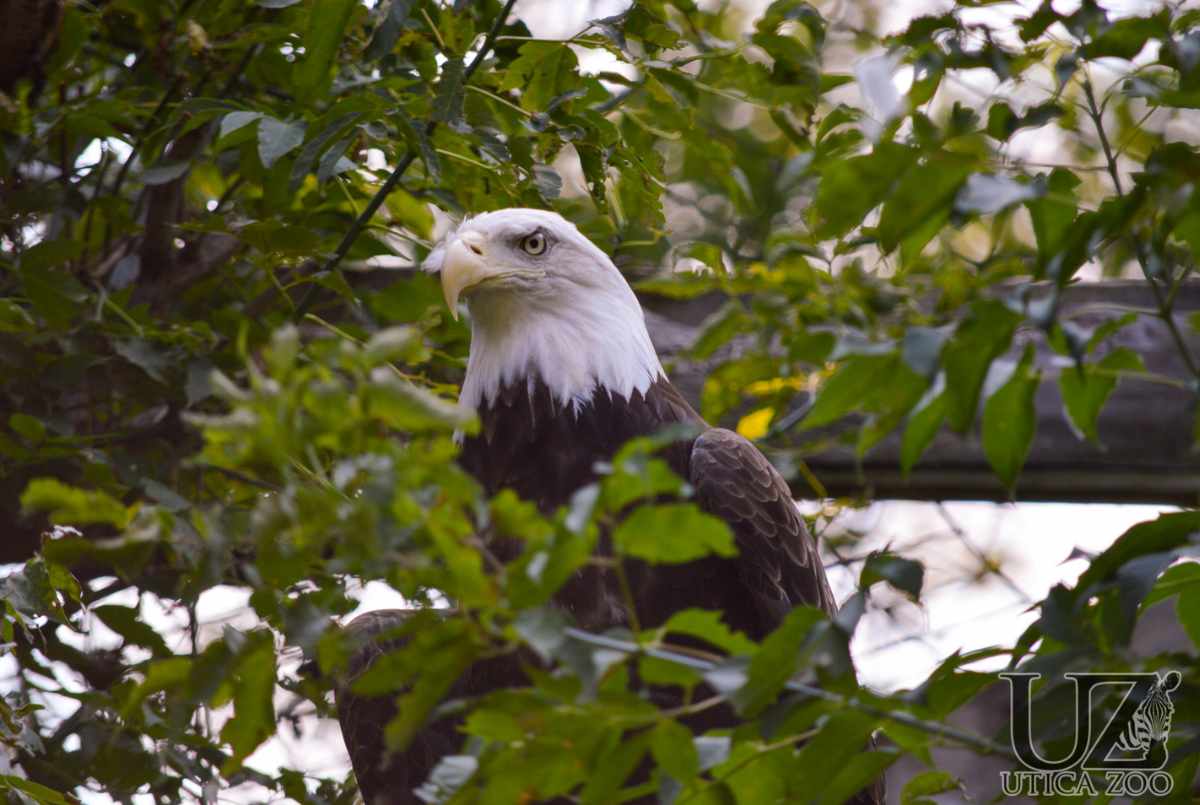Bald Eagle

Basic Information:
Scientific Name: Haliaeetus leucocephalus
Habitat: Bald Eagles are found all throughout North America from the Mexican border through the United States and all the way up to Northern Canada and Alaska.
Diet: Bald Eagles primarily eat fish, but can also be found eating waterfowl, shorebirds, colonial waterbirds, small mammals, turtles, and carrion
Size: 2.5 to 3 feet tall / 6.5 foot wingspan
Weight: 6.6 to 14 pounds
Lifespan: 16.5 years according to AZA Species Survival Statistics
Distribution Map:
I.U.C.N. Conservation Status:

What does this mean?
Least Concern – a species determined by the International Union for Conservation of Nature (I.U.C.N.) to be pervasive, abundant, and thriving.
Our Bald Eagles:
Ginger (Female) – Estimated Date of Birth April 1996
Colden (Male) – Estimated Date of Birth Between May & June 2005
Spirit (Male) – Estimated Date of Birth 2003
*All of our eagles were born in the wild and injured. After they were deemed non-releasable due to being either partially flighted or unflighted from their injuries they came to the Utica Zoo. Spirit is usually on the ground (being unflighted) while Ginger and Colden are higher up (being partially flighted).*
About Bald Eagles:
Did You Know?!
- Unlike older bald eagles who make a nest that they return to every year, younger bald eagles are known for being more nomadic. In fact, they can fly hundreds of miles every single day while exploring!
- Bald eagles can fly up to 10,000 feet up in the air.
- Since the call of a bald eagle – which has been described as being like a high-pitched laugh – was deemed too awkward and raspy for the call of America’s signature bird, film directors often replace their call with the more majestic one of a red-tailed hawk in movies.

